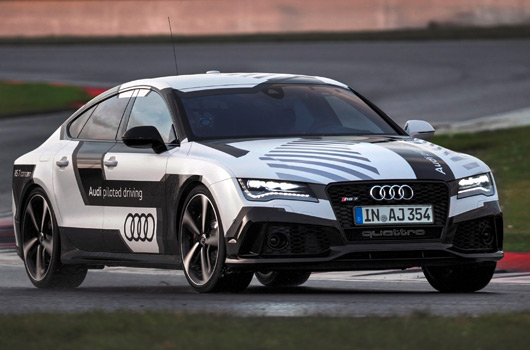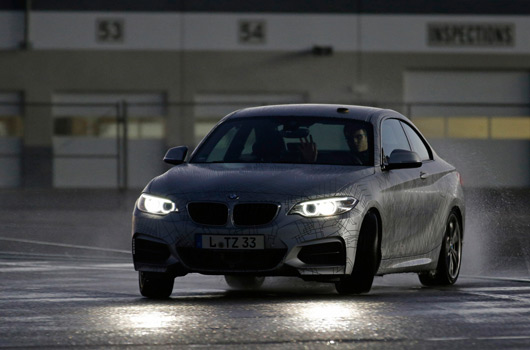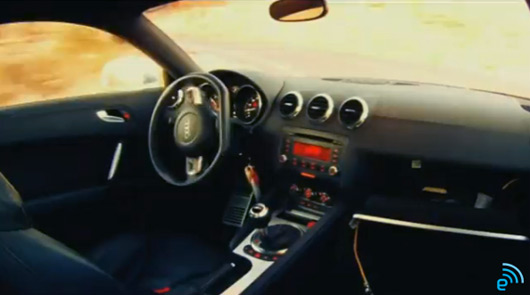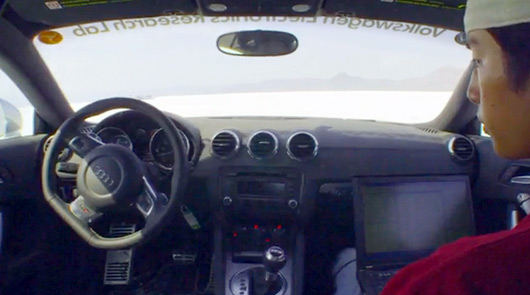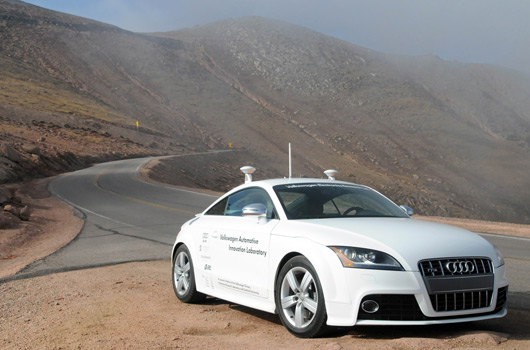Audi has been leading the way in the world of driverless technology and that was further highlighted in a live demonstration during the season-ending DTM round at Hockenheim on the weekend.
With the strangely named Audi piloted driving technology onboard, making it sound like the car has a pilot at the wheel, a driverless RS7 lapped the famed German grand prix track in just over two minutes, reaching a maximum speed of 240km/h. Apparently that’s a world record top speed for a driverless car.
The specially prepared RS7 used a combination of GPS, WiFi, high-frequency radio and 3D cameras to guide itself around the circuit. As you’ll see in the highlights video below the accuracy of the car’s cornering lines is very good and so too the positioning of the car in the pole position grid spot at the end of its lap.
If you think the end is nigh and we’ll all one day have the joys of driving taken away from us, Audi has this to say:
It might sound futuristic, but it’s already at the starting gates. For Audi, piloted driving is one of the top drivers of innovation in the coming years and is a logical, evolutionary step in the development of the car. It’s an evolution that has the potential to revolutionise the experience of driving a car. And one thing is certain: If it is up to Audi’s engineers, the feeling of freedom and the fun of sporty driving will be maintained – because there is a choice. Piloted driving is not a “mustâ€, but rather something you “can†select. Audi will never build robot cars, but instead will always put the driver in the focus of its decisions.
